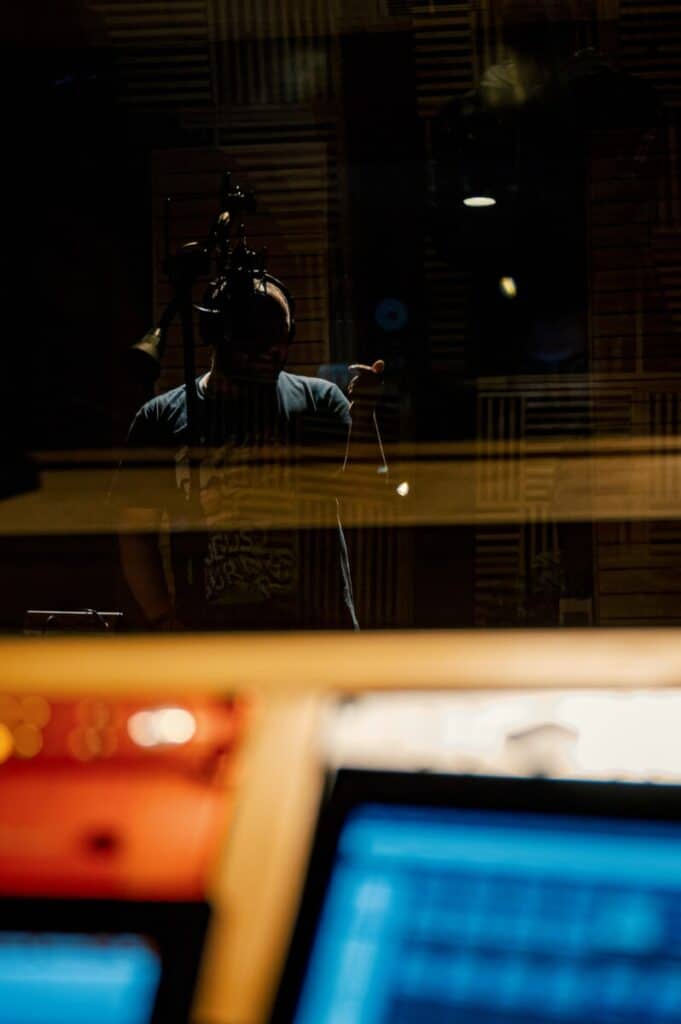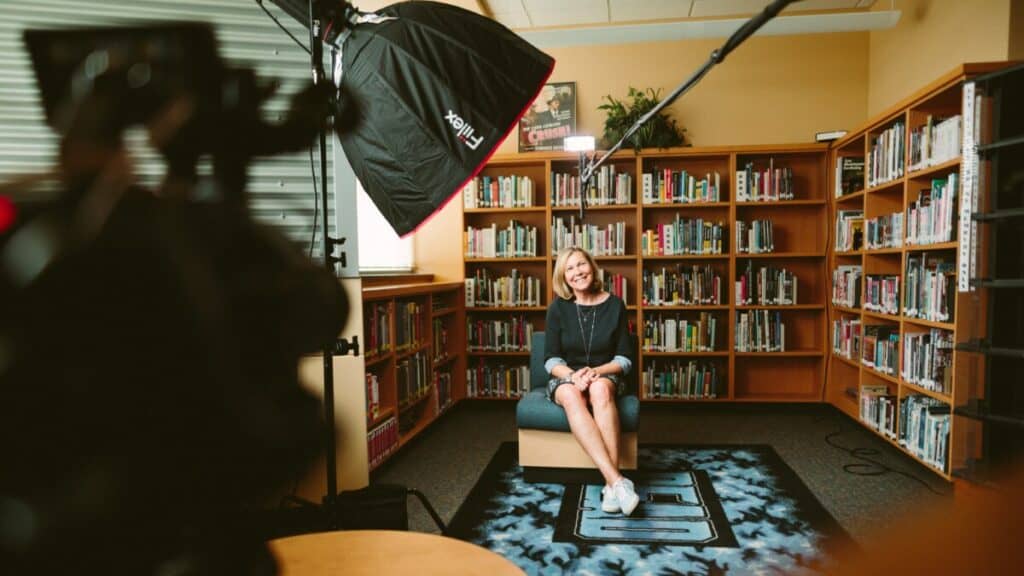The way you sound in your videos or the quality of it is not just determined by the microphones, preamps, and various other sound equipment you use. The physical space or studio you are in also ascertain how well sound travels or translates through your equipment. So, does a video studio need acoustic treatment?
A video studio does need acoustic treatment. Every sound produced inside a room or studio hit a physical surface. Upon contact, they either get bounced off or absorbed. Generally, when sounds are not taken in by surfaces or reflected, they color your recordings, usually in an undesirable manner.
Keep reading to learn more about the native sound of any room, how they interact or disrupt sounds audio instruments create or record, how you could manage or eliminate those disruptions, etc.

The Inherent Sound of Any Room
The space you’re using for your video projects was most likely not built to function as a studio.
Generally, rooms have a sound of their own. In other words, sounds in a given space travel and get impacted by the path they’re on. They could get absorbed and/or reflected based on a range of factors.
The noise within your space is also talking with other sounds falling in its path, affecting the room’s sound even more in the process. All this sound moving around produces sonic anomalies or deviations that weren’t there in the initial sound.
One way to monitor a recording accurately or getting clean, good sound is by managing or eliminating the room’s original sound. In other words, you should be able to record and listen to the audio source and not what the walls in your studio have been bouncing around.
With acoustic treatment, you ensure that your composing, editing and mixing are accurate and not affected by the room. Even if you would like your recordings to have a “live” vibe to them, you still should be able to manage the sound in your room.
Your studio’s acoustic treatment lets you manage how sound behaves within the space, letting you record and examine your audio accurately.
Two Most Common Sound Issues in a Room
Slap and flutter echo are two prevalent issues in rooms that aren’t designed for video recording and performance.
Flutter Echo
Flutter echo is essentially energy trapped between two distinct surfaces. In standard rooms, this happens between a wall and energy-generating equipment (such as a speaker). The sound energy, based on the wavelength, is caught between the parallel surfaces. This causes reflections, which then translates as energy traveling between those two surfaces.
This movement of energy energizes the air between the two surfaces, causing audible distortion in the process. This distortion could happen between walls, bookshelves, and cabinets.

Slap Echo
Also called slapback, slap echo is an echo caused by non-absorbing or reflective surfaces, typified by significant high-frequency sound content levels. When you clap your hands sharply, you can listen to the distinctive echo sound. A slap echo smears a stereo sound area by wrecking the critical phase associations needed for creating a perfect soundstage.
Slap echo-stimulating devices are quite popular in a recording. In other words, a discrete repeat-echo could be blended with the sound of an instrument, which results in a live sound akin to auditorium sounds.
Here is a wonderful video demonstrating how to use slapback delay to your advantage:
Room Acoustics – Getting It Right
There are different ways to get your video studio’s acoustics on point. The following are the three primary and common techniques:
Absorption
Acoustics absorption is how a structure, material, or object absorbs or takes in sound energy and doesn’t reflect the energy when sound waves encounter. A portion of the energy absorbed gets converted into heat, and another part is transmitted via the absorbing body.
Acoustic foam is usually used to absorb noise in a room. The foam
can be trimmed to size, is cost-effective, and extremely easy to use. When fit in place, it enhances the quality of the sound your microphones pick up and offers you a much more accurate monitoring space.
Diffusion
Diffusion ensures sound waves do not accumulate. In other words, it helps spread sound energy in a space evenly. When hard, flat surfaces bounce off sounds, the energy stays very much intact, producing distinct echoes. These discrete echoes create destructive effects – such as standing waves, comb filtering
, and flutter echoes – that hurt music clarity and speech intelligibility
in your recordings.
A sound diffuser disrupts flutter echoes and standing waves without eliminating acoustic energy or changing the sound’s frequency spectrum. Diffusers interrupt the individual echoes by diffusing or scattering sound energy over an area without banishing them.
Diffusion helps make a tiny space seem big and a big space larger. The right balance of absorptive and diffusive surfaces changes with room function, size, and desired outcomes.
Bass Traps
A bass trap is an acoustic energy absorber designed to dampen low-frequency sound energies to attain a flatter, low room frequency response. Low-frequency sounds have incredibly long, intense wavelengths. They are quite challenging to control, which means you need a lot of foam to absorb them.
Low-end frequency sounds tend to accumulate in the corners of a room and cause issues such as increasing the room’s bass levels. A bass trap cuts out the excessive bass and smooths out a room’s sound signature.
Bass traps do not just absorb your room’s low-end frequencies. They also help with defining the low-frequency sounds, making the sounds more comfortable to detect and control. Bass traps are relatively inexpensive, and you also need not fill your entire studio with them.
If you think your video studio would sound better with these bass traps and are considering buying the traps, take a look at the New Level Charcoal Foam Bass Traps.
Last update on 2025-07-02 / Affiliate links / Images from Amazon Product Advertising API
Surfaces and Sound Reflections
Hard surfaces reflect pretty much all sounds that come in contact with them. Softer surfaces absorb a portion of the sound waves. To create the ideal acoustics for your studio, try mixing all kinds of surfaces.
To get started, carpet your area and have one wall covered with a soft material. Glass reflects almost 100% of all sound striking it, causing a harsh slapback. If your studio’s wall area is 10% or more glass, cover that glass area with something chunkier and more adhering than a curtain.
Studio Shape/Size Matters Too
If you are not planning to overhaul your video studio or build one up from nothing, the studio’s size or shape is a moot topic. But if you are indeed in a position to alter the physical confines of your space, here are a few things you should know.
Certain rooms could be much better than others to get the right sound. Some especially bad acoustic traits of rooms are irregular shapes (extra corners or L-shaped rooms), curved surfaces, non-parallel surfaces, and square spaces.
As far as the room size is concerned, bigger spaces are better – as you can move around your various audio tools and microphones to find the right spots. Tiny rooms are usually not accommodative of such alterations, but they do make fewer echoes than big rooms, to begin with.
Conclusion
The objective behind setting the acoustics of your studio right is not to create a “dead” space but a neutral one. A dead room absorbs way too much sound, which you do not want when recording, as that creates excessively dry tracks, and the room’s natural ambiance also goes to waste.
To get your studio’s sound profile right, learning about room acoustics and a few techniques is critical. The larger goal should always be to create an environment with a proper balance of absorptive and reflective surfaces.
Sources
- Sweetwater: Acoustic Treatment Buying Guide
- Acoustics First: Sound Diffusion Explained
- Acoustic Fields: Flutter Echo and How It Applies to Room Acoustics
- Sweetwater: What is “Slap Echo”?
- GIK Acoustics: How Bass Traps Work
Recent Posts
QuickTime is a vital app for many Mac users, and if you’ve recently bought a new microphone, you might wonder how to use it optimally. QuickTime cannot record audio content if it doesn’t have...
Every microphone leaves a unique signature on the quality of its output. If you’re a podcaster trying to melt your way into your audience’s hearts, a muddy, distorted recording won’t cut it....

